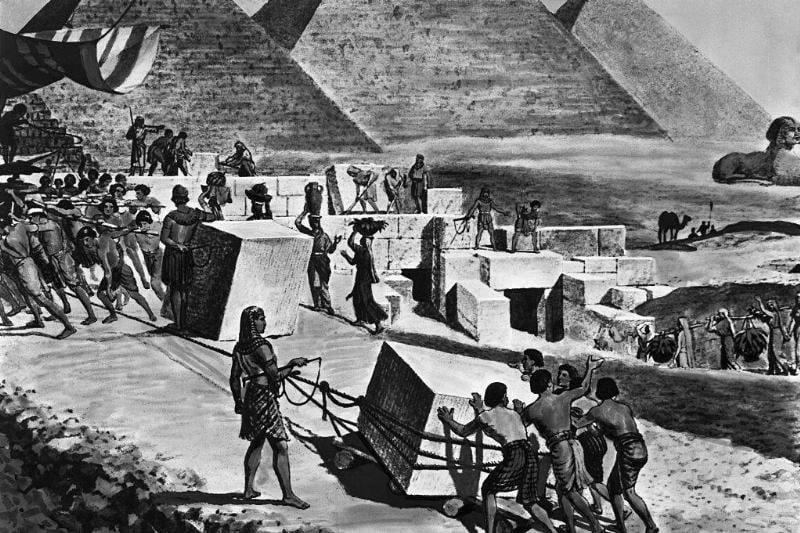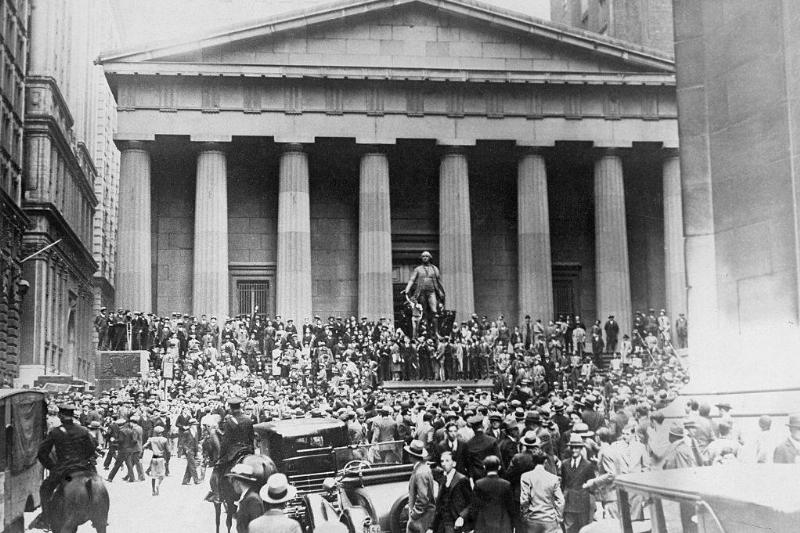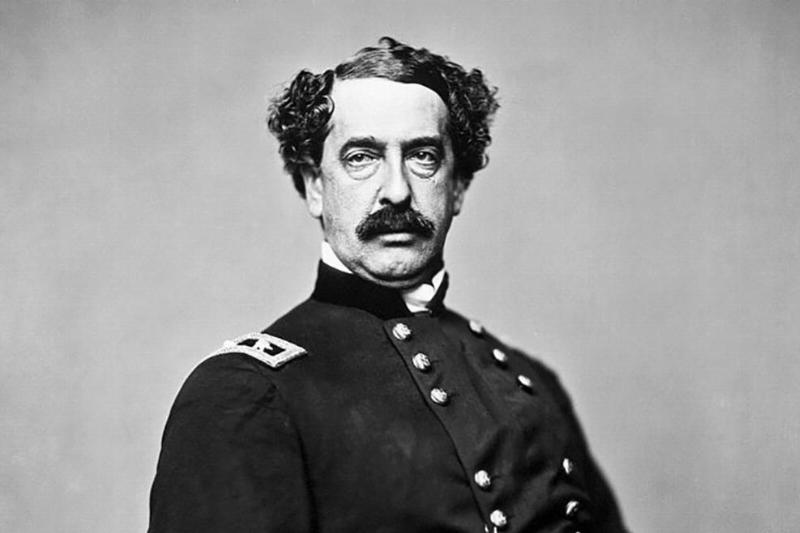20 Historical ‘Truths’ That Have Been Disproven
The eradication of misinformation is one of education’s main objectives. That entails identifying and dispelling the numerous falsehoods spread via the internet and word of mouth. At some point or another, we have also been led to believe false information.
If you think Einstein failed math as a child or that Napoleon was the smallest ruler ever, then we have some bad news for you. The truth is that when it comes to history, not many of us have our facts straight. Read on to discover which historical “facts” you’re probably getting wrong!
Cleopatra was Egyptian
Despite becoming Egypt’s final monarch, Cleopatra was not Egyptian. Cleopatra belonged to the Ptolemaic dynasty, a Greek-descended family that controlled Egypt after Alexander the Great. The dynasty refused to learn the native Egyptian language even as rulers in Egypt, though Cleopatra was the first to do so.

Source: Ann Ronan Pictures/Print Collector/Getty Images
The misconception regarding her nationality is thought to have stemmed from how she dressed and presented herself in public as a reincarnation of the Egyptian goddess Isis. Like many of her predecessors, Cleopatra wanted to identify herself with Isis and be revered.
Albert Einstein failed mathematics
The alleged fact that Albert Einstein wasn’t good at math is nothing more than a myth that people tell each other to make others feel better about their shortcomings. Einstein was, on the contrary, an exceptional mathematician, and the erroneous rumor was spread by the untrustworthy Ripley’s Believe It Or Not.

Source: Bettmann/Getty Images
Einstein responded to the claims by saying that he “never failed in Mathematics” and that he had mastered differential and integral calculus by the age of 15. His matriculation certificate, which he got at the age of 17, also reveals that he excelled in Algebra and Geometry.
The flush toilet was invented by Thomas Crapper
Although this myth has been making youngsters laugh for decades, Thomas Crapper did not develop the flush toilet, despite being a plumber and businessman who ran a plumbing equipment company in England in the 19th century.

Source: SSPL/Getty Images
By the time Crapper began his plumbing apprenticeship as a kid in the 1840s, this wonderful innovation had already been completed. He can’t claim credit for the word “crap” either; it’s a 13th-century word for “garbage.”
Napoleon Bonaparte had a short stature
Napoleon Bonaparte wasn’t as small as we are taught to believe, even though he was often described as having a “little man complex.” Napoleon was five feet two inches tall in pre-metric system French units or about five feet six inches tall in modern measurement units.

Source: VCG Wilson/Corbis via Getty Images
That was slightly taller than the average male height in France at the time, which was roughly five feet five inches. Napoleon was given the moniker “Le Petit Corporal,” however it’s thought that this was a term of affection among his soldiers.
Slaves were freed because of Abraham Lincoln’s Emancipation Proclamation
Contrary to popular belief, the Emancipation Proclamation did not free the slaves during the Civil War. It only pertained to Confederate states, and since the North lacked the authority to implement the proclamation, it failed to achieve what many people assume it did.

Source: Stock Montage/Getty Images
Slavery also remained legal in the Northern states, even if it became less common there. In the North, owning slaves was not prohibited; only purchasing and selling them were.
Marie Antoinette said “Let them eat cake”
In his book Confessions, Jean-Jacques Rousseau said that a “great princess” told the starving people of France, “Let them eat cake.” There is no proof that Marie Antoinette ever said these words, despite popular belief.

Source: Universal History Archive/Universal Images Group via Getty Images
This phrase, or something similar, has also been ascribed to various other royals, including some ancient Chinese dynasties. Lady Antonia Fraser, a biographer, argues that another French royal said this around a century earlier, suggesting that it was likely Marie-Thérèse, Louis XIV’s wife.
Vincent Van Gogh cut off his ear during a period of insanity
One of the most well-known anecdotes about the famed impressionist painter Vincent Van Gogh is that he severed his own ear and sent it to a French woman. This resulted in one of Van Gogh’s most renowned paintings, which depicts him wearing a bandage over his ear.

Source: Universal History Archive/Getty Images
In 2009, two German art historians discovered a book called Pact of Silence in which Van Gogh’s close friend and opponent Paul Gauguin confessed to severing Van Gigh’s ear with a fencing rapier. Following this incident, both men resolved to remain silent about it. However, Gauguin later made up the tale about Van Gogh shipping his ear to a woman to make him appear insane.
The pyramids were built by Jews
Amihai Mazar of The Hebrew University of Jerusalem has said that the Egyptian pyramids were not built by Jews. Mazar alleges that it was former Israeli Prime Minister Menachem Begin who made this claim during a 1977 visit to Egypt.

Source: Bettmann/Getty Images
Meanwhile, Dieter Wildung, a former director at Berlin’s Egyptian Museum, dismissed the claim that the pyramids were built by slaves as the “stuff of tabloids and Hollywood,” saying that the world just could not accept the idea that the pyramids were simply built out of devotion to the pharaohs.
Benjamin Franklin wanted the country’s national bird to be a turkey
Something that would probably make Benjamin Franklin roll over in his grave is the widely-accepted “fact” that he wanted the turkey, not the bald eagle, to be the country’s national bird. However, the only time he mentioned both bald eagles and turkeys together was in a letter he wrote to his daughter.

Source: Universal History Archive/Getty Images
In the letter, he talked about the Society of the Cincinnati, a military organization, and criticized their eagle seal for resembling a turkey rather than an eagle. Although he mentions not wanting the bald eagle to be the national bird, he never said he would rather have a turkey as the symbol of the country.
The 1918-1920 flu pandemic began in Spain
The 1918-1920 flu pandemic is thought to have killed around 50 million people in 1918 alone. It’s believed that the reason why this became known as the “Spanish flu” was that Spain was among the first countries to be severely affected early on. Even Spain’s ruling monarch at the time fell ill.

Source: American Unofficial Collection of World War I Photographs/PhotoQuest/Getty Images
Although it’s extremely difficult to figure out the Spanish flu’s origins, John Barry, author of The Great Influenza, believes that the first case happened in Haskell County, Kansas before spreading to Europe towards the end of World War I.
North America was discovered by Christopher Columbus
Christopher Columbus only ever explored the Caribbean, Central America, and South America; he never managed to make it to North America despite there being a US holiday commemorating his arrival. There is also evidence that Vikings, who were from Europe, landed in North America 500 years before Columbus supposedly did.

Source: Universal History Archive/Universal Images Group via Getty Images
There are eight Viking structures on Canada’s Newfoundland island, now a UNESCO World Heritage Site. It’s thought that the Vikings visited the area to repair their ships and wait out harsh weather during the winter months.
The Great Chicago Fire was started by a cow knocking over a lantern
The Great Chicago Fire, which took place from October 8th to 10th, 1871, destroyed over three square miles of the city and claimed 300 lives. There is a legend that the fire started after a cow owned by a woman named Mrs. O’Leary knocked over a lantern. The journalist who wrote about it later revealed that he had made it up.

Source: Bettmann/Getty Images
Although it was true that the fire started in a neighborhood southwest of the city, it is believed that the fire was caused by a period of hot, dry, and windy weather that allowed wood throughout the city to easily catch fire.
Paul Revere Shouted, “The British Are Coming!”
The famous story about Paul Revere’s heroic actions at the start of the American revolution is nothing but fiction. He never traveled from town to town yelling at the top of his lungs that the British were coming.

Source: Interim Archives/Getty Images
Since many British troops were thought to be hiding in the area, he had to be discrete in passing along information. Furthermore, he would have called them “regulars” since the colonial militia still saw themselves as British at the time.
Wall Street workers jumped off buildings following the crash of 1929
Following the 1929 stock market crash, rumors that Wall Street workers had started jumping off buildings began to spread. Though the head of Rochester Gas and Electric and the president of Country Trust Co. did end their lives, they used guns to do it.

Source: ullstein bild/ullstein bild via Getty Images
Despite the efforts of New York’s top medical examiner to dispel the rumors, the stories persisted. Comedians like Will Rogers helped spread the rumors, alleging that people had to wait in line to jump out of a window.
People believed that the world was flat during Columbus’ time
Many people think that when Columbus “discovered” America in the 15th century, most people still thought that the Earth was flat and that his trip would end with him plunging off the edge of the planet.

Source: Ann Ronan Pictures/Print Collector/Getty Images
However, the belief that the Earth was flat had already been debunked by the ancient Greeks. What Columbus believed was that he could reach East Asia by sailing west from Europe. He called the native population “Indians” because he believed he had found the East Indies.
Thanksgiving was first celebrated by the Pilgrims in 1621
People have been made to think that the first Thanksgiving was celebrated by the Pilgrims in 1621. However, it has been stated that they had already enjoyed countless meals of giving thanks prior, as did the Spaniards in Florida as reported in 1565.

Source: Universal History Archive/Universal Images Group via Getty Images
It wasn’t until 1863 that Abraham Lincoln declared the last Thursday of November to be a holiday in honor of Thanksgiving. The holiday was then shifted to the third Thursday of the month by President Roosevelt to allow more time for shopping to improve the economy until it was finally changed again.
The Vikings wore helmets with horns
Vikings are frequently depicted in popular culture as huge, bearded warriors wearing horned helmets and brandishing large combat axes. There is no evidence, however, that these Norsemen wore them. However, it has been discovered that Viking warriors either wore leather headgear or had no helmets at all.

Source: Wikipedia
The myth dates back to the 1800s when Swedish artist Gustav Malmströmstems’ artworks showed Vikings wearing horned helmets. This idea was reinforced in some of Richard Wagner’s operas, which featured Vikings wearing them.
Charles Lindbergh was the first person to fly across the Atlantic Ocean
While Charles Lindbergh became known as the first pilot to fly solo across the Atlantic in 1927, he wasn’t the first to do it. Alcock and Brown, two British pilots, were the first to complete the journey in 1919 using a modified RAF bomber.

Source: Bettmann/Getty Images
The two men made their way from St. John’s in Newfoundland to Galway, Ireland in less than 16 hours. A few weeks later, twelve crew and passengers on board the British airship R34 completed a four-day double-crossing.
Peanut Butter was invented by George Washington Carver
Even though botanist George Washington Carver discovered many uses for peanuts (and gave the American South’s economy a boost in the process), he did not invent peanut butter. The popular spread can be traced to the Aztecs, who crushed roasted peanuts to create a paste.

Source: Bettmann/Getty Images
Additionally, the first modern patent for peanut butter was issued in 1884, when Carver was twenty years old. His supposed invention of peanut butter was also not mentioned in his obituary in the New York Times in 1943.
Abner Doubleday was the inventor of baseball
In a 1908 ruling, the Mills Commission determined that baseball was invented by Civil War commander Abner Doubleday in Cooperstown, New York in 1839. The National Baseball Hall of Fame and Museum is now located in the city. However, history professor George B. Kirsch has claimed in his book that Doubleday was at West Point, not Cooperstown, in 1839. Doubleday also never left any traces of his involvement with the sport.

Source: CORBIS/Corbis via Getty Images
Baseball was also previously thought to be a North American variation of the British bat-and-ball game rounders. However, according to American historian David Block, there is some evidence that suggests that the sport originated in England.
